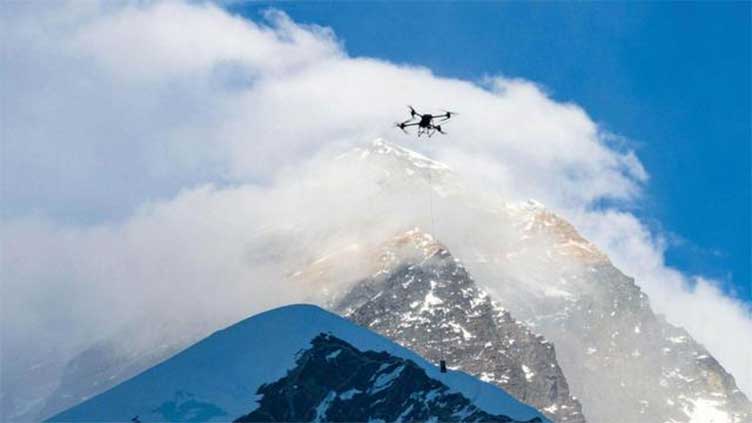Drone completes world's first delivery on Mount Everest

Technology
The drone was able to carry 33 pounds of stuff
Web Desk) - The drone was able to carry 33 pounds of stuff and return to base camp with recipients’ trash.
In collaboration with Nepalese Airlift, 8KRAW, and local guides, DJI has completed the world’s first drone delivery on Mount Everest.
Conducted in April this year, the test serves as proof of concept for using drones to deliver supplies to mountaineers rapidly and safely.
This remarkable feat was achieved using DJI’s FlyCart 30, which has a maximum carrying capacity of 33 pounds (15 kg). The drone needed to carry the load safely and under extreme conditions at high altitudes.
The FlyCart 30 carried three oxygen bottles and three pounds (1.5 kg) of other supplies during the tests. It was flown from Everest Base Camp, at 17,389 feet (5,300 meters) above sea level, to Camp 1 which is at 19,685 feet (6,000 meters) above sea level.
On its return flight, the drone even carried trash back from Camp 1. The two camps are separated by the Khumbu Icefall, one of the ascent’s most perilous stages.
A world first for DJI and Mount Everest
“From the end of April, our team embarked on a groundbreaking endeavor to help make cleanup efforts on Everest safer and more efficient,” said Christina Zhang, Senior Corporate Strategy Director at DJI.
“We are thrilled to share that our DJI FlyCart 30 was up to the task. The ability to safely transport equipment, supplies, and waste by drone [can] revolutionize Everest mountaineering logistics, facilitate trash cleanup efforts, and improve safety for all involved,” she adde
While helicopters could theoretically make the same journey, they rarely do because of the inherent dangers and costs. Before the recent tests, DJI engineers had to put the drone through its passes to survive Everest’s extreme environmental challenges.
These included temperatures ranging between -15° and 5°C, wind speeds up to 33 mph (15 m/s), and high altitudes.
Under these conditions, the drone conducted hover tests with different weights, wind resistance, low-temperature, and weight capacity tests with increasing payloads.
While very interesting in themselves, the recent tests also have important implications for safety on the mountain.


